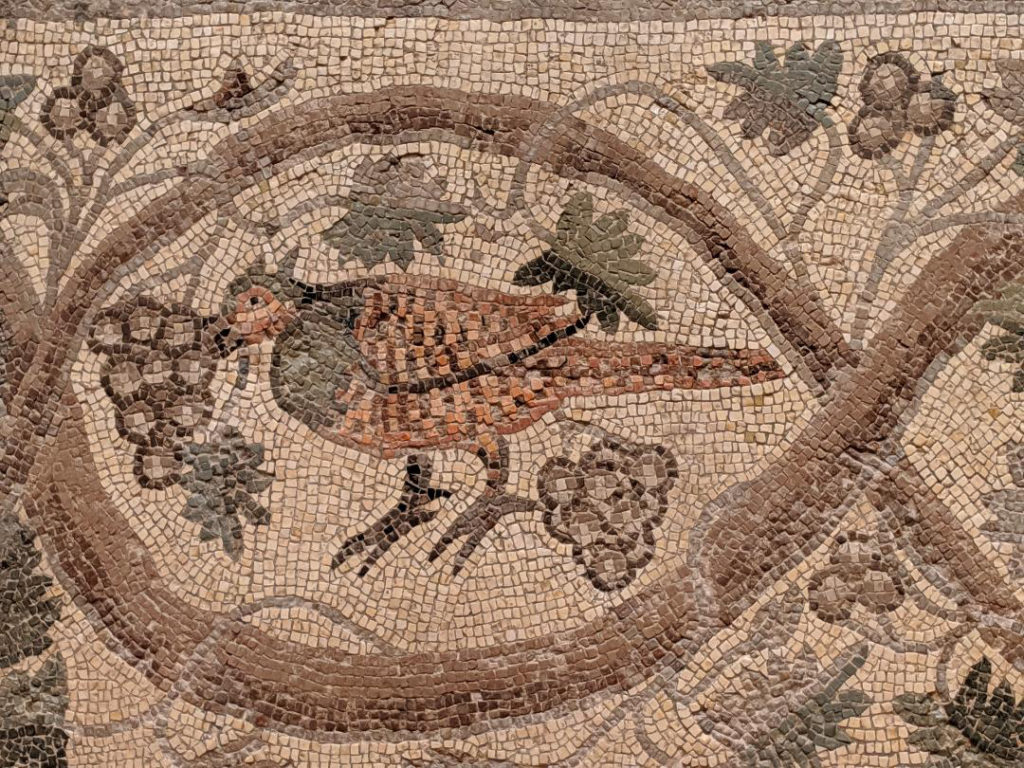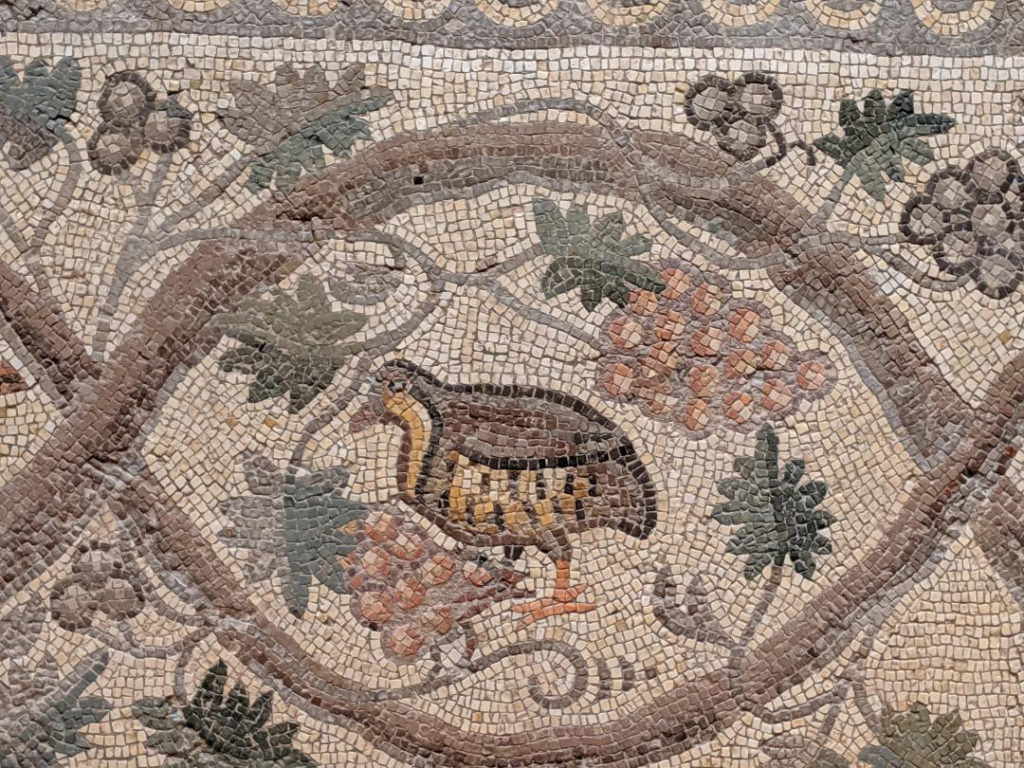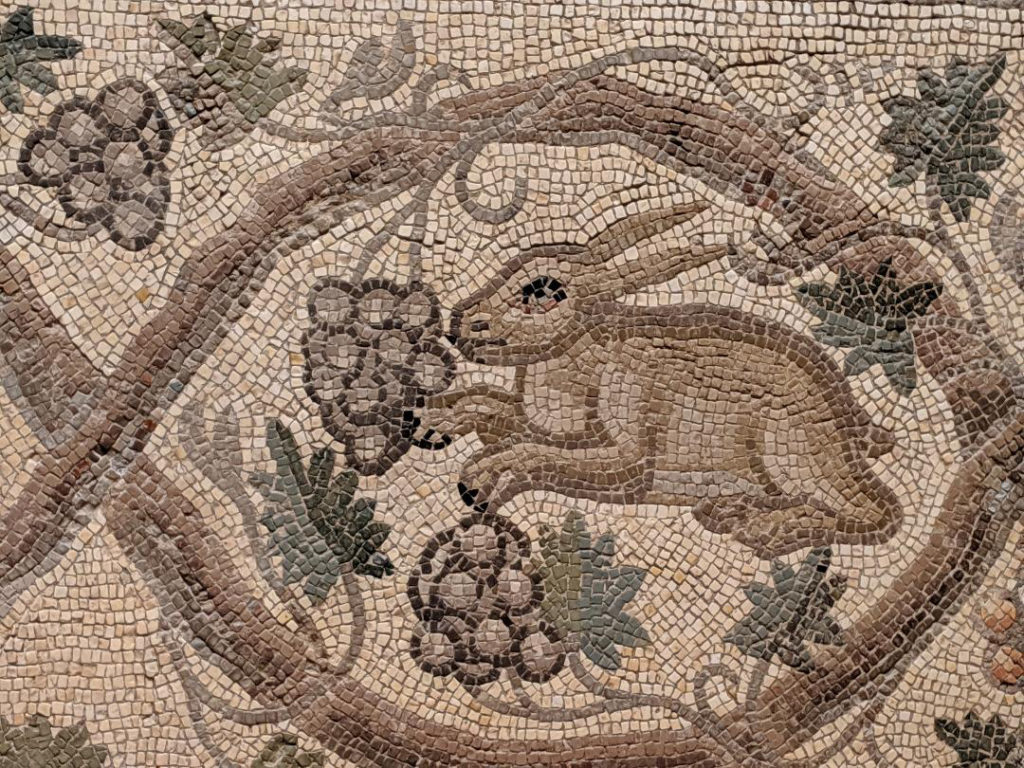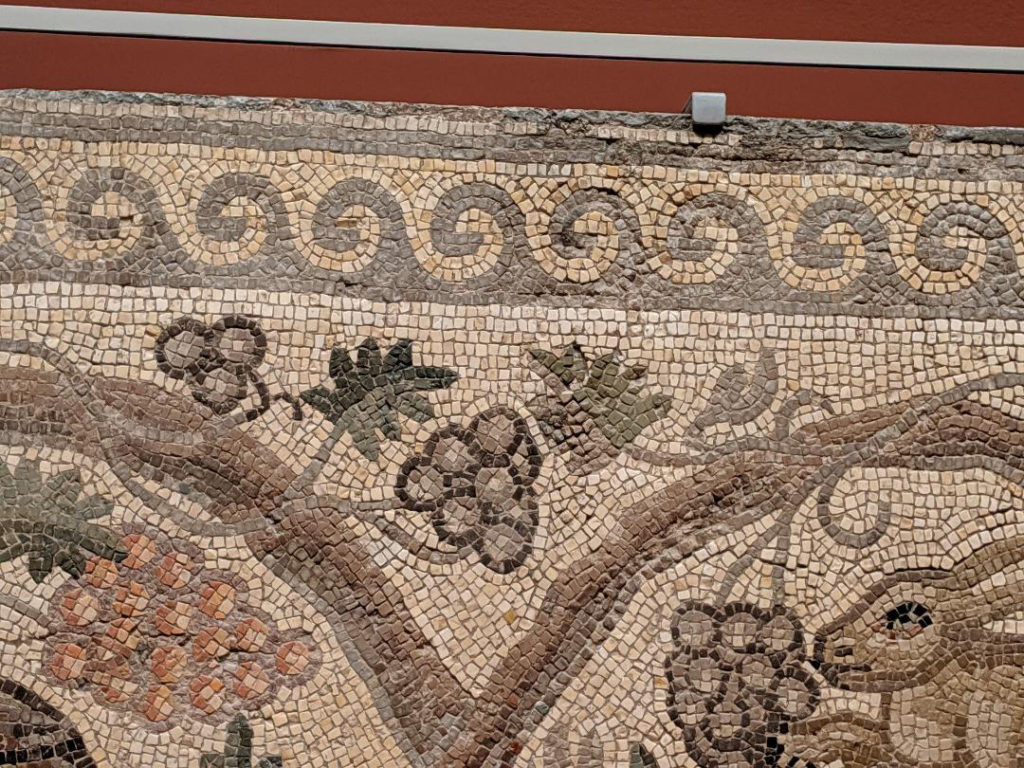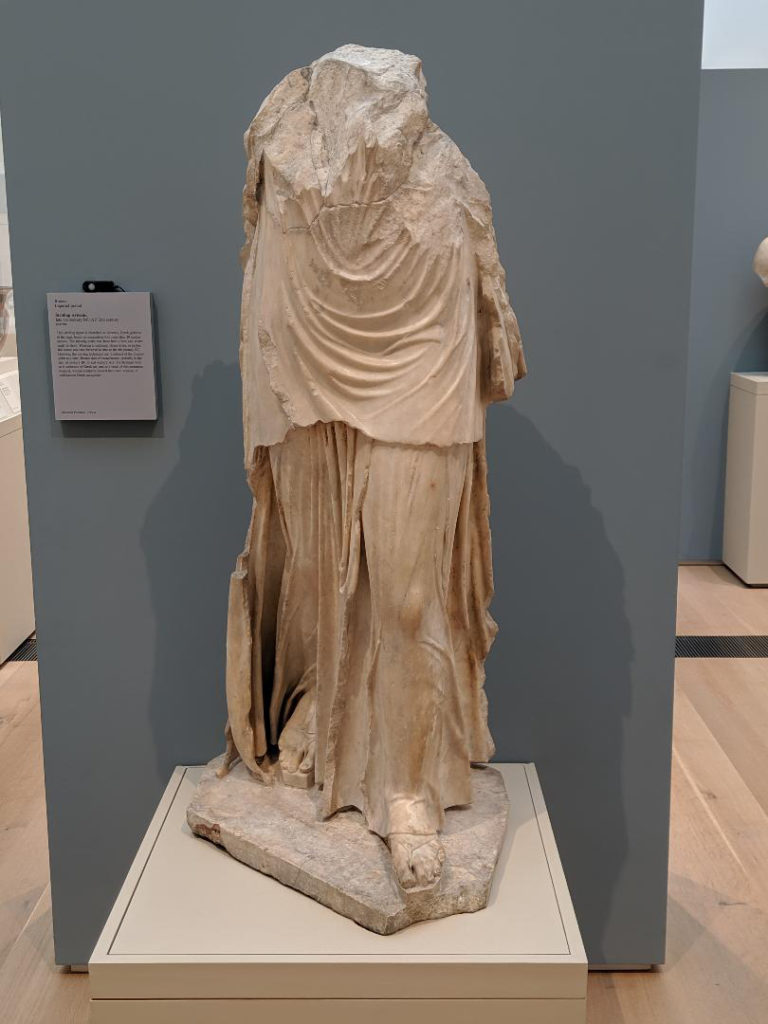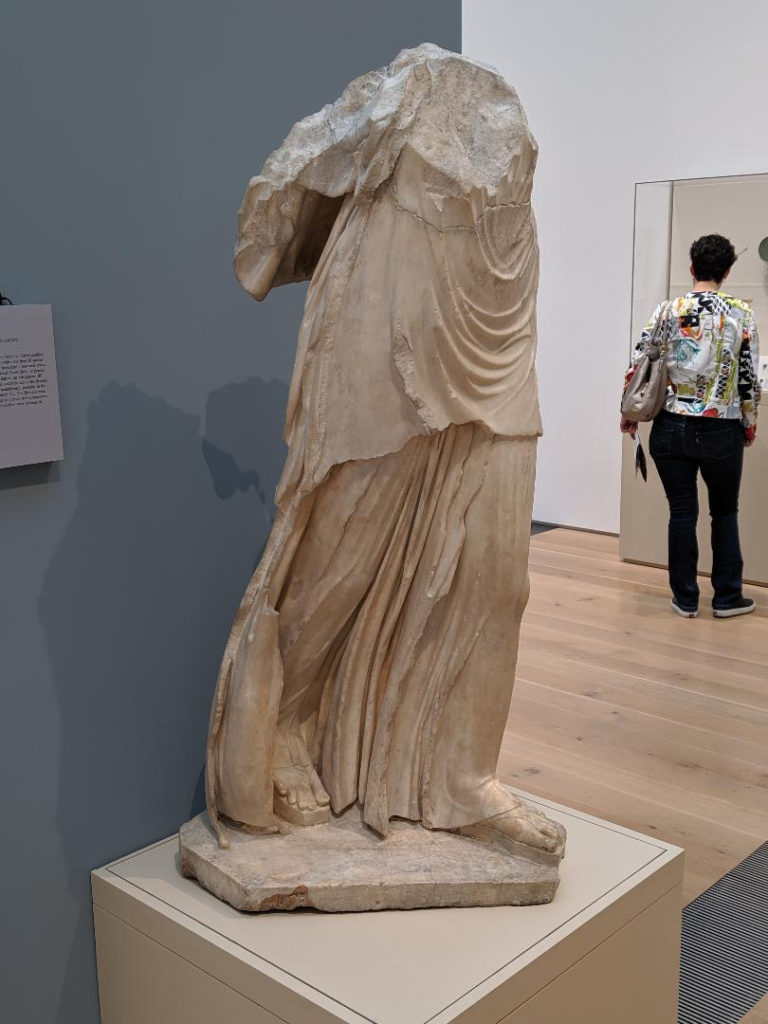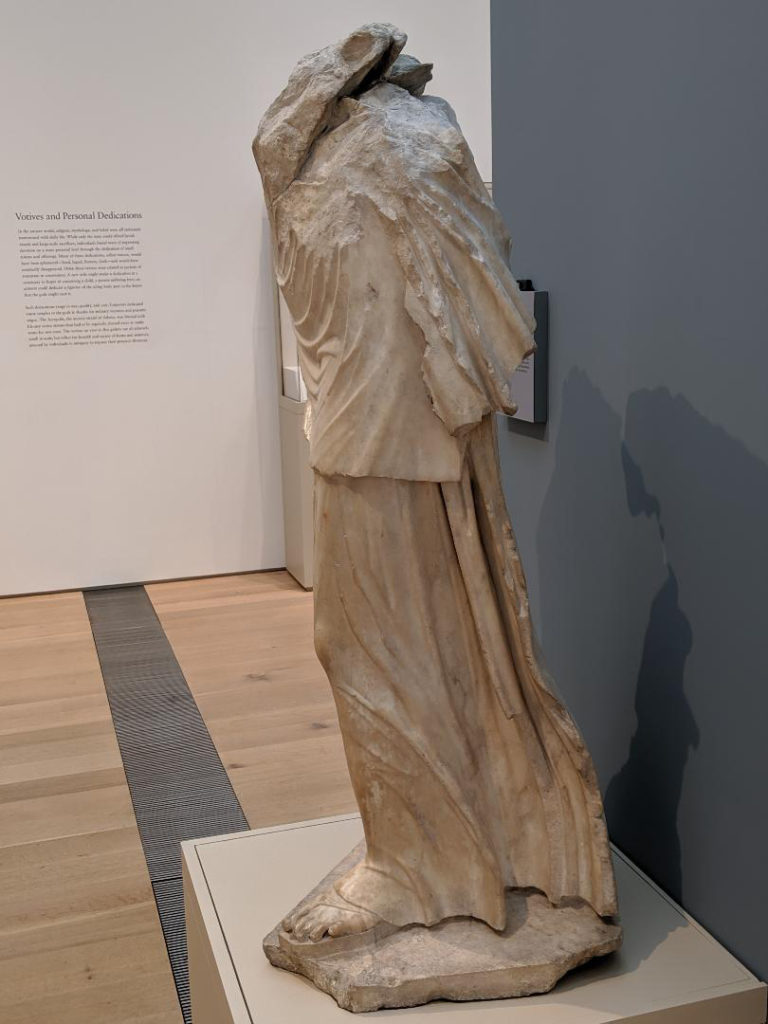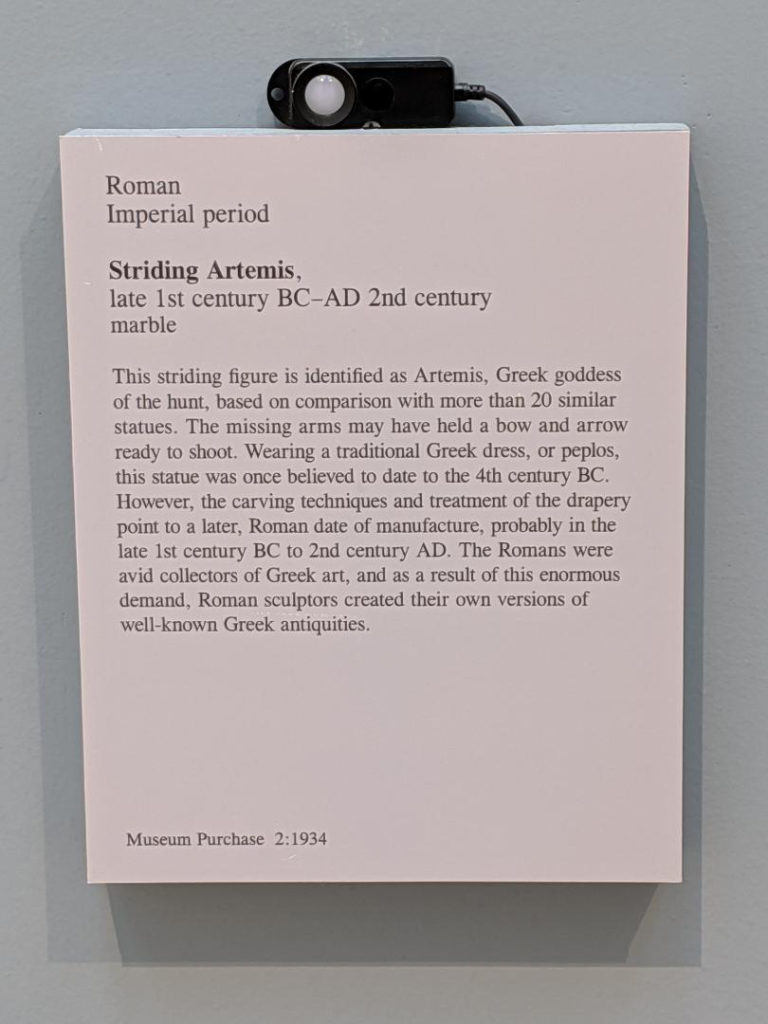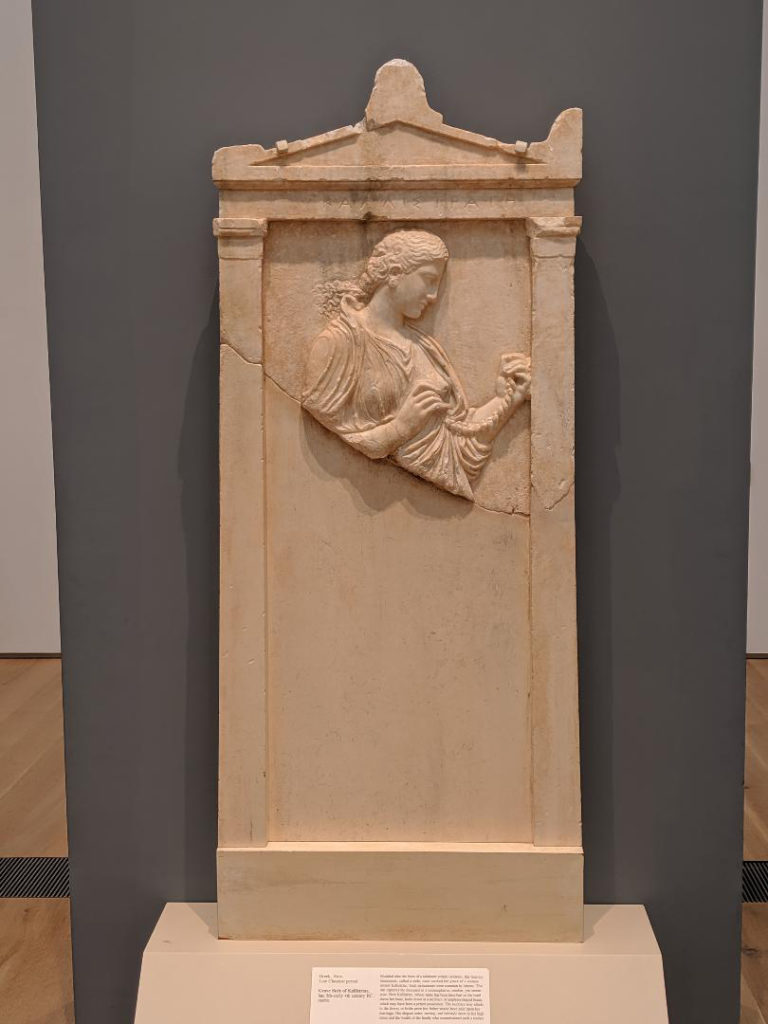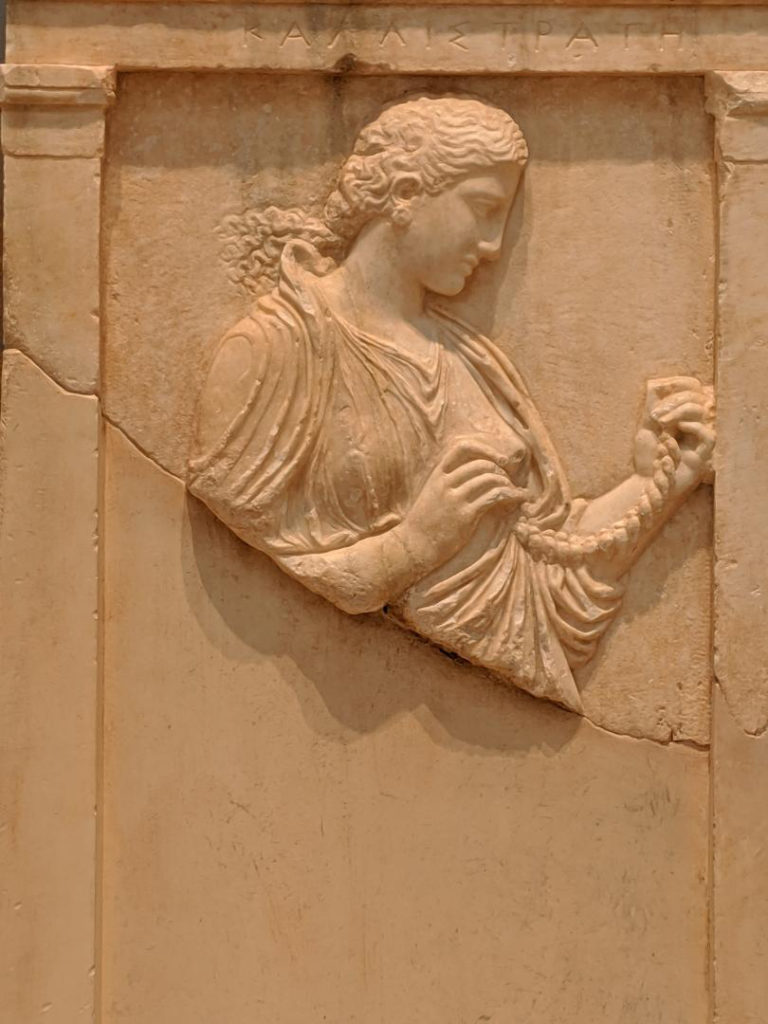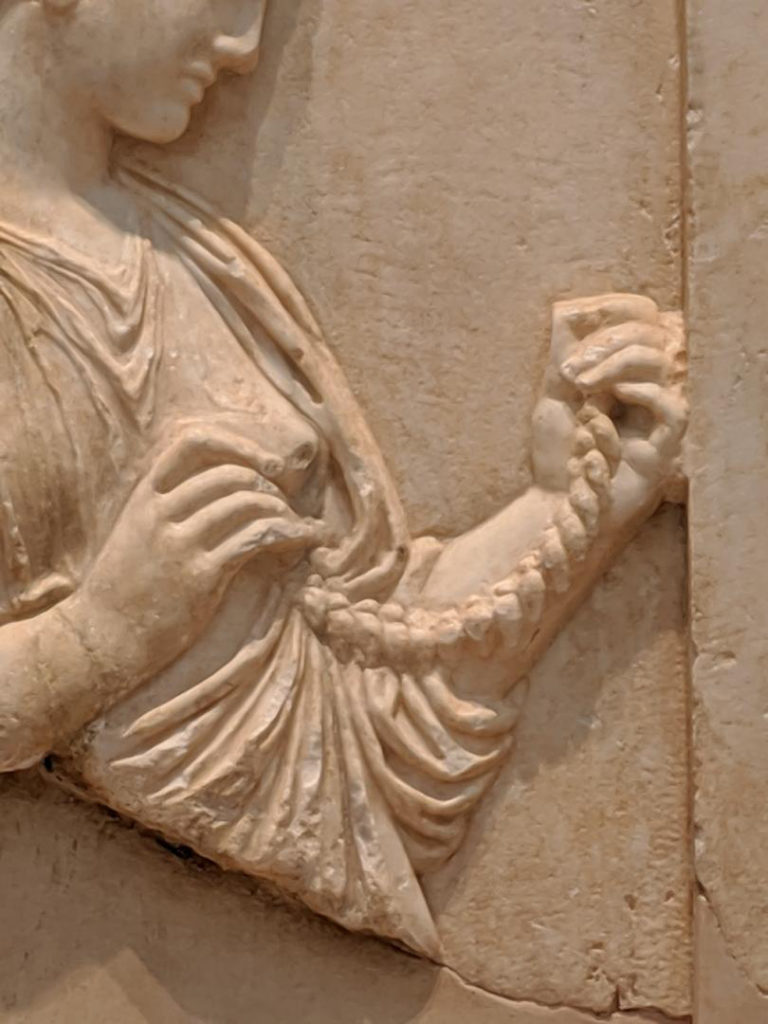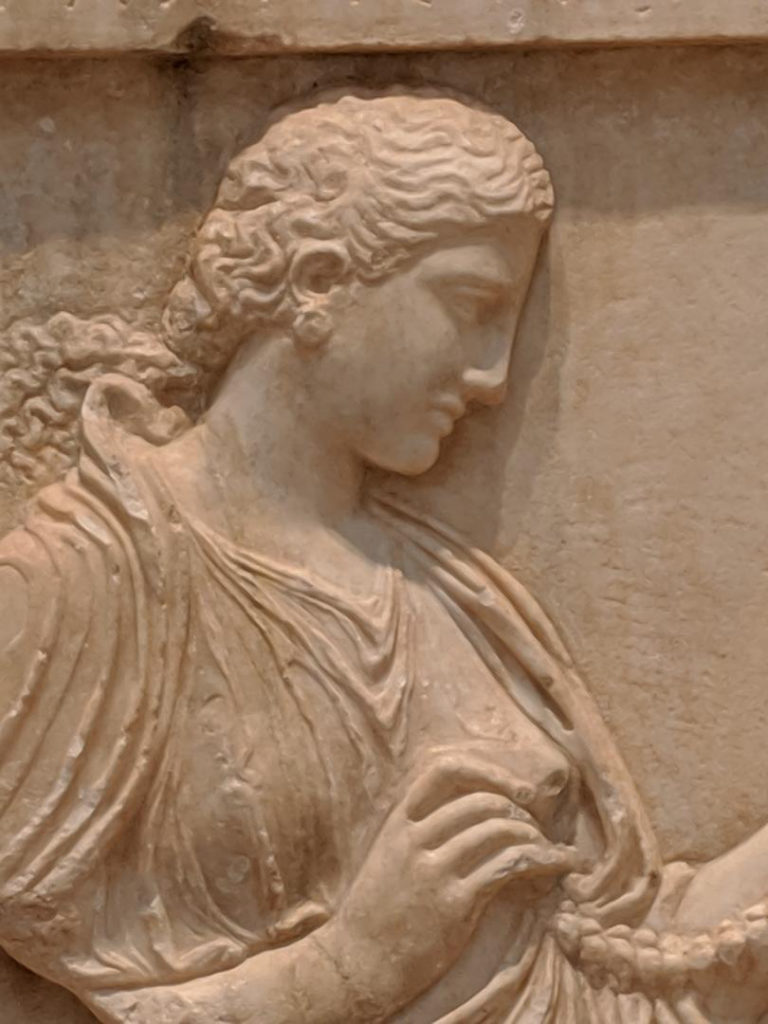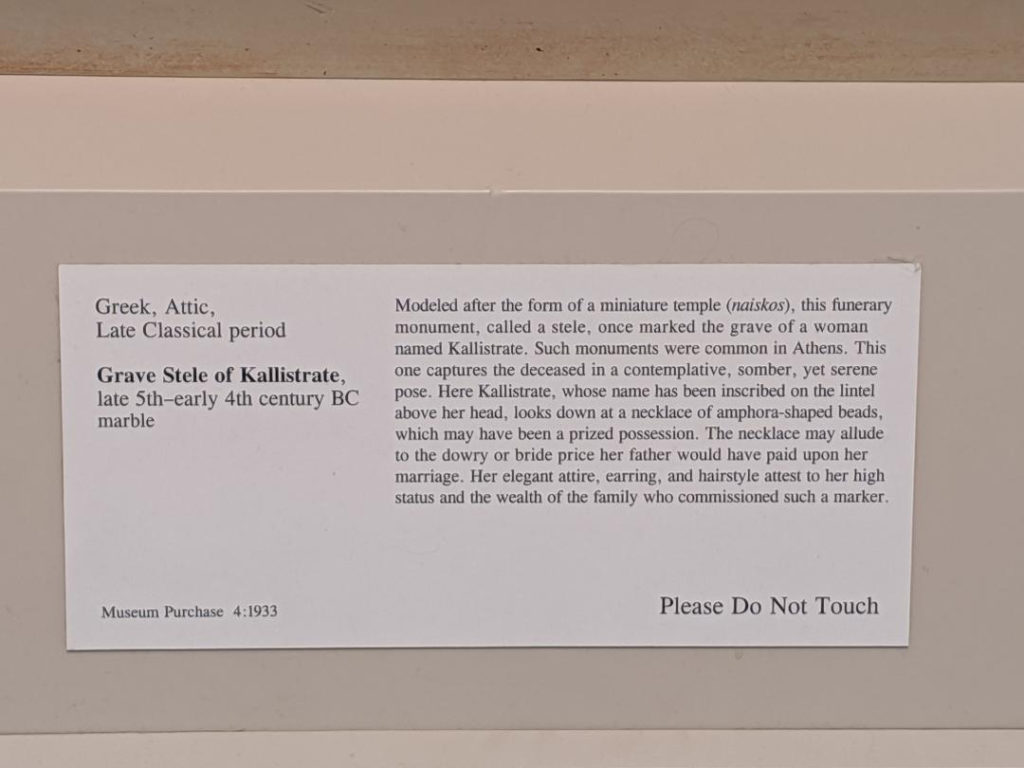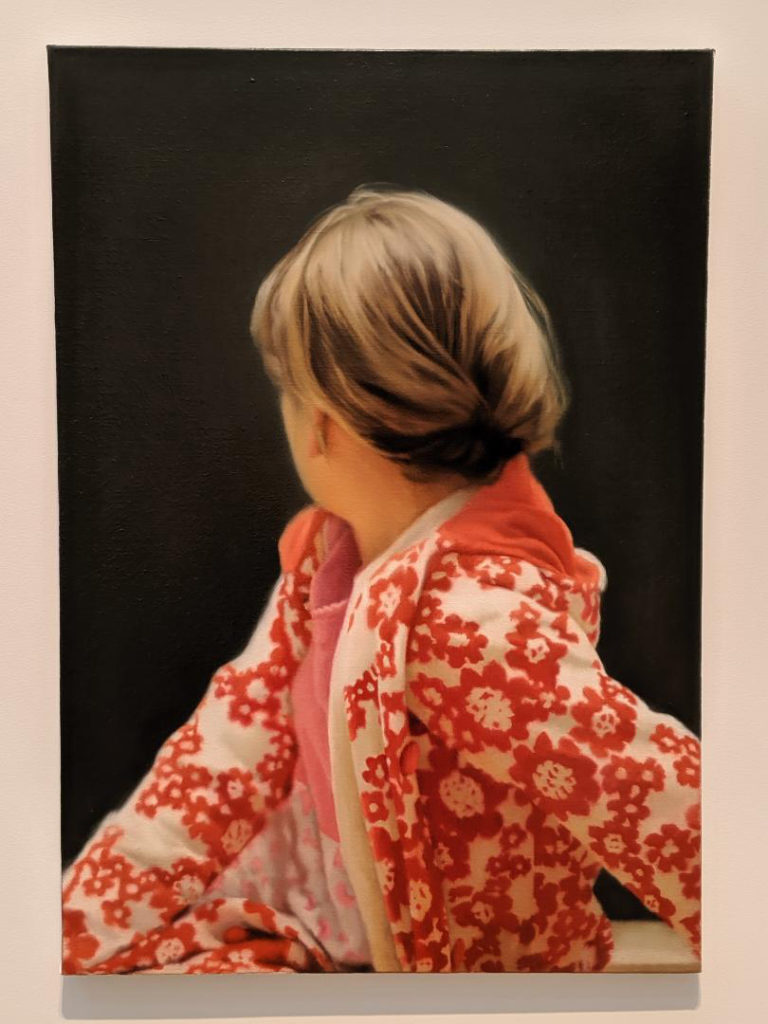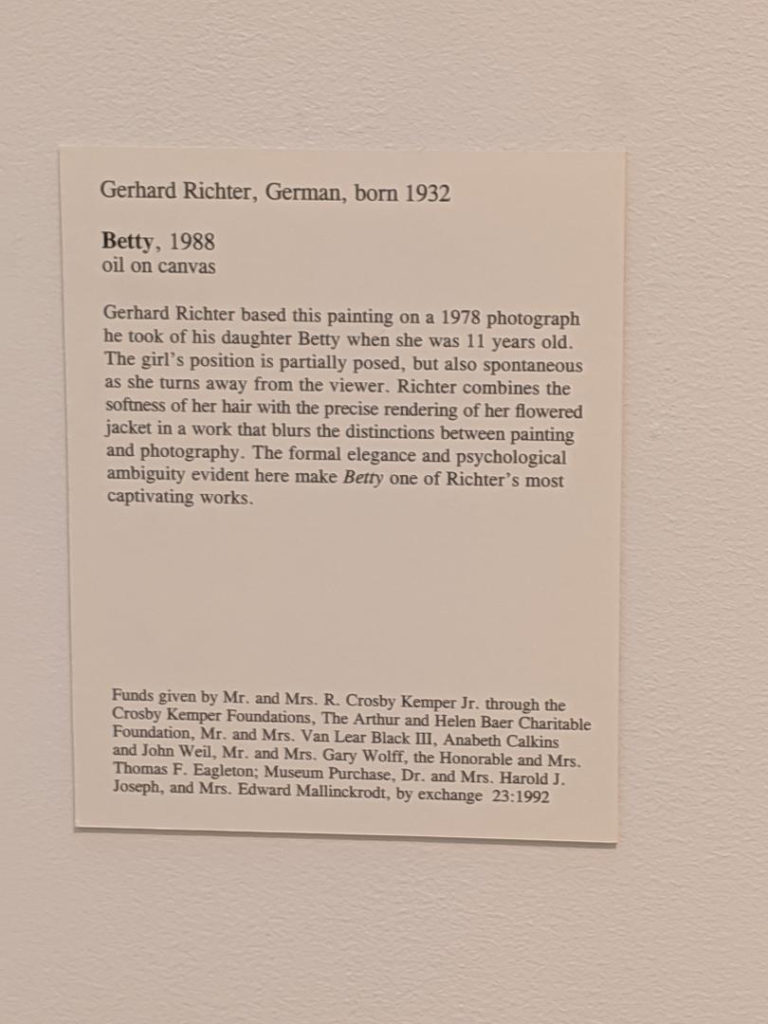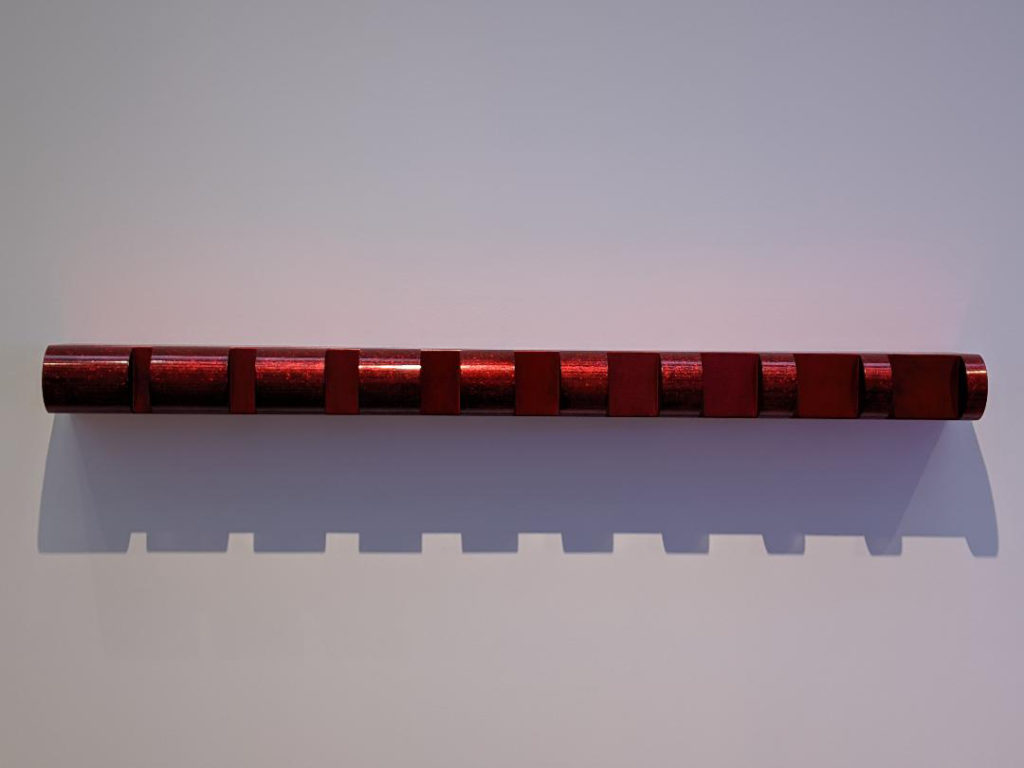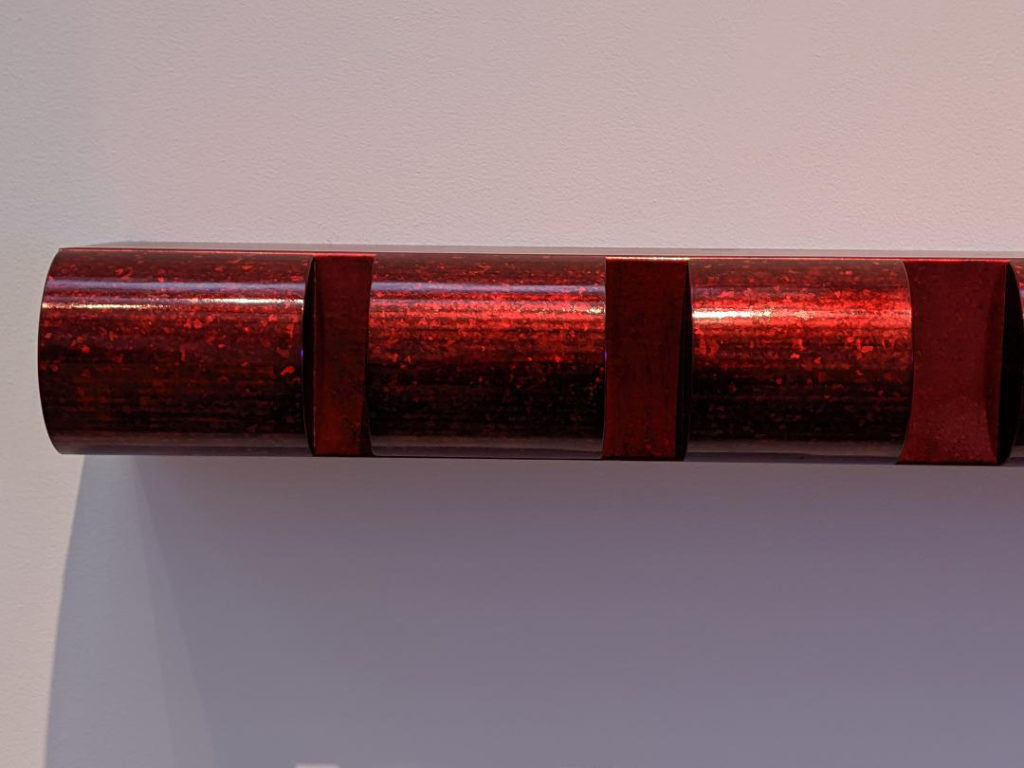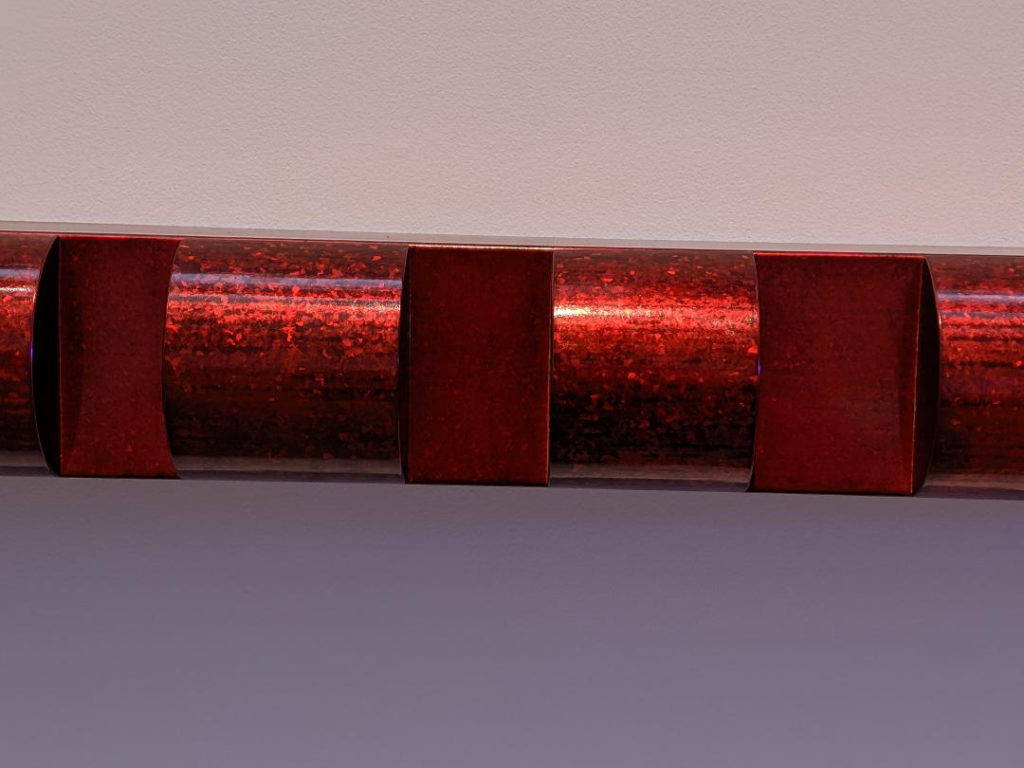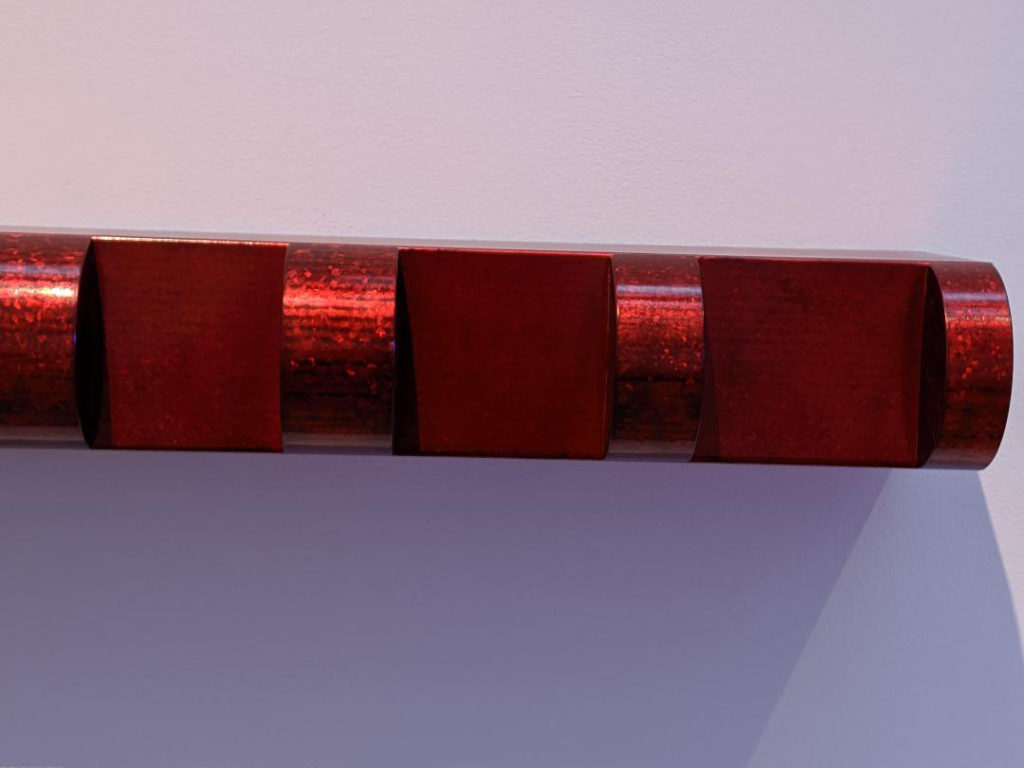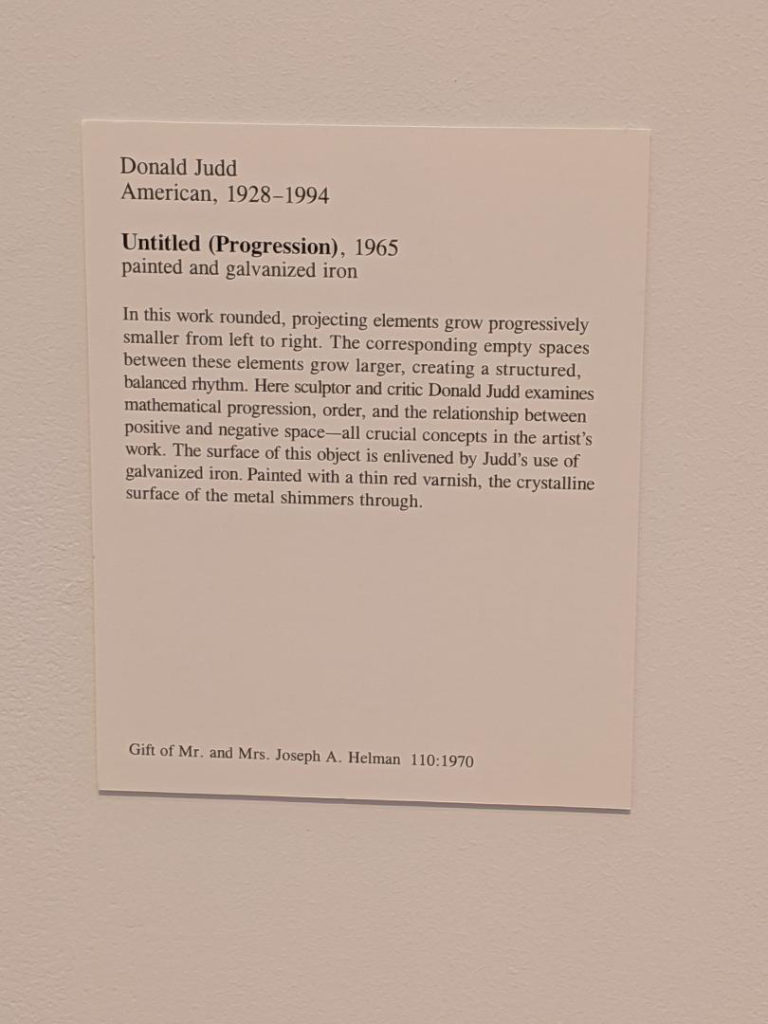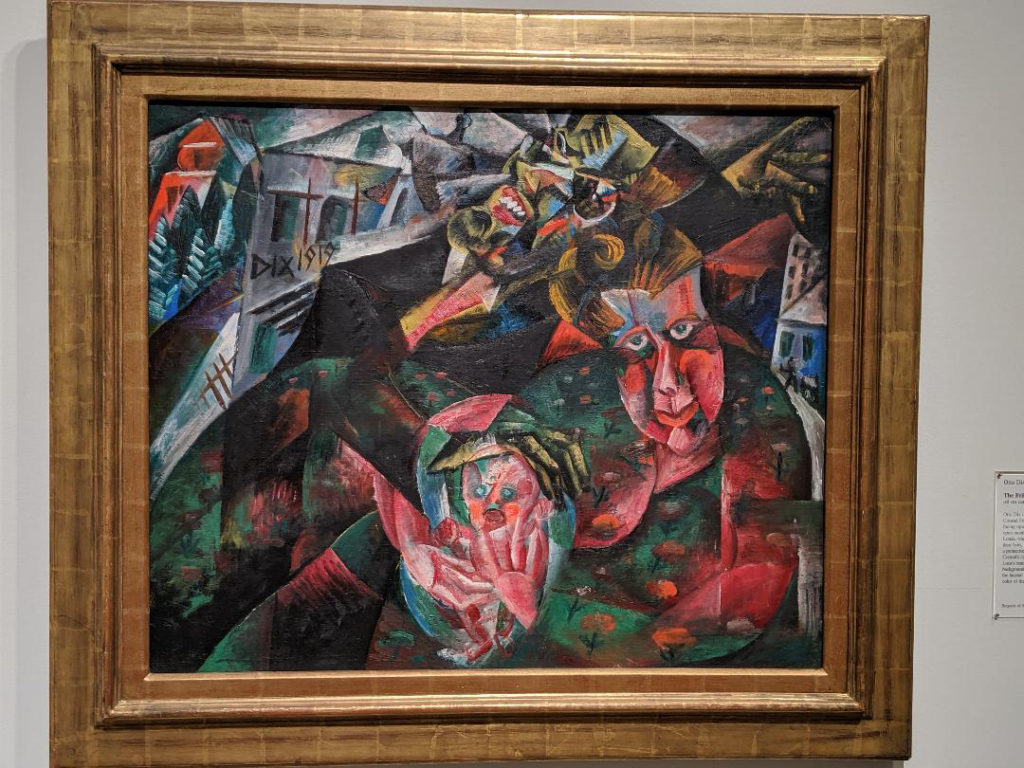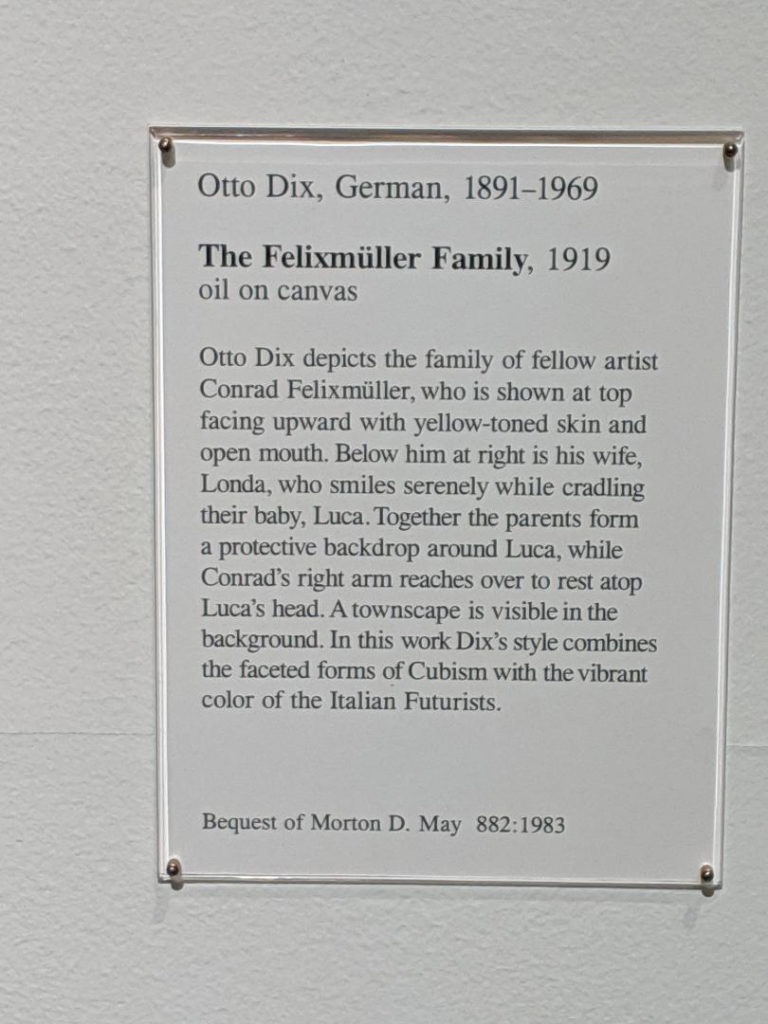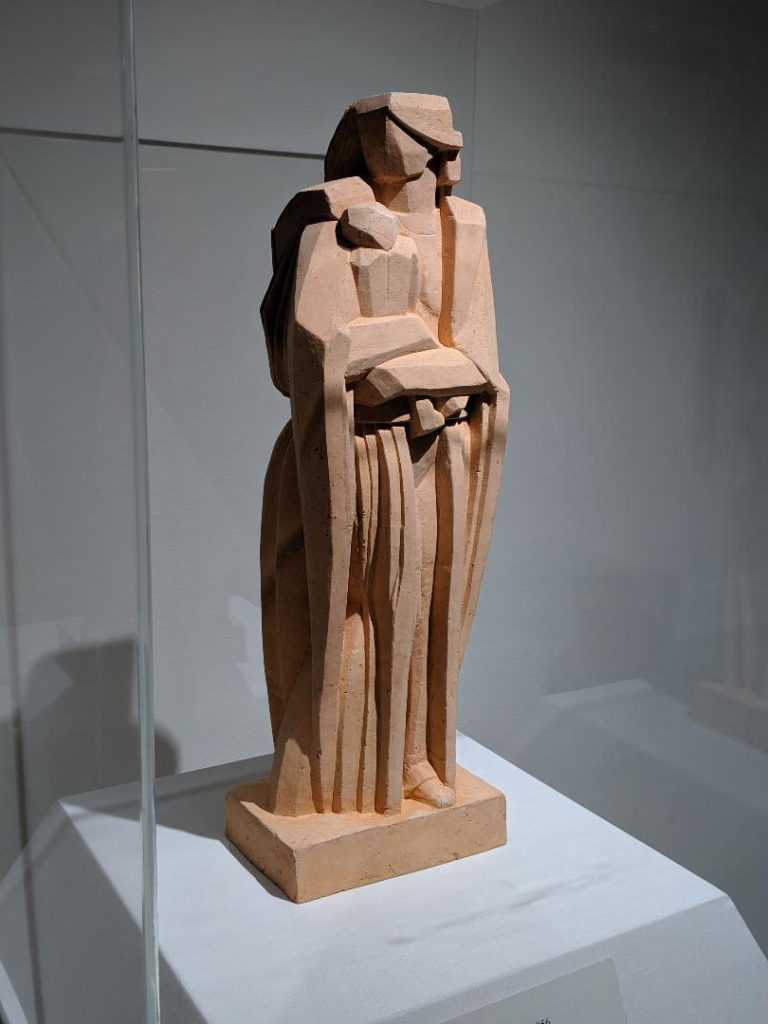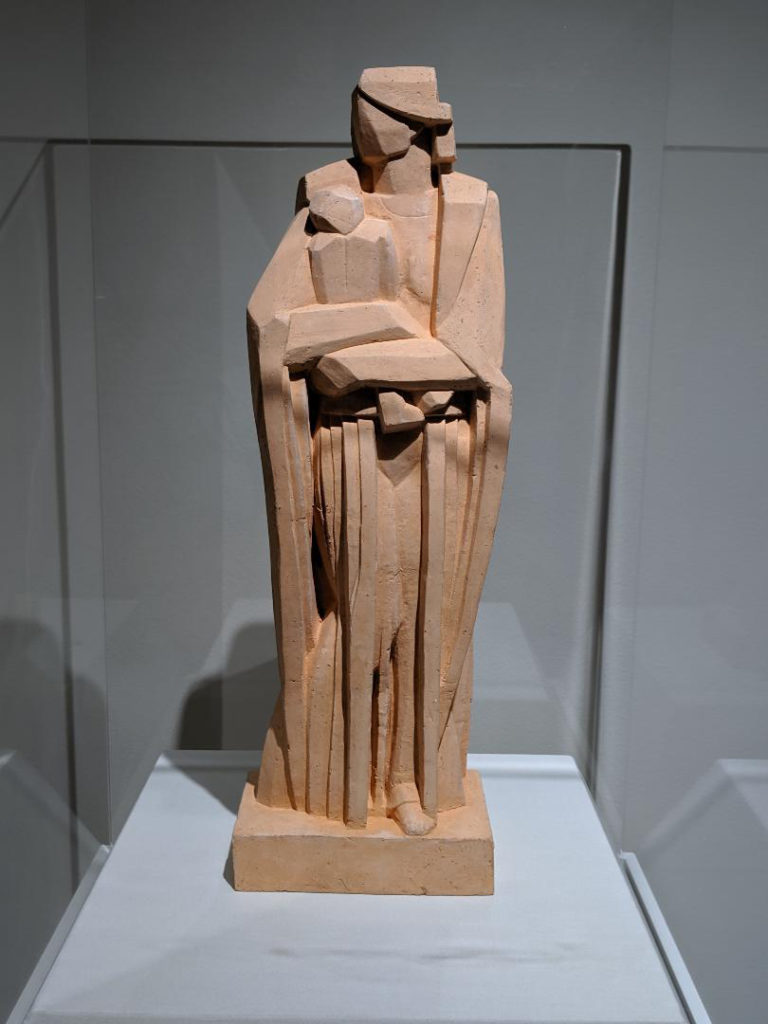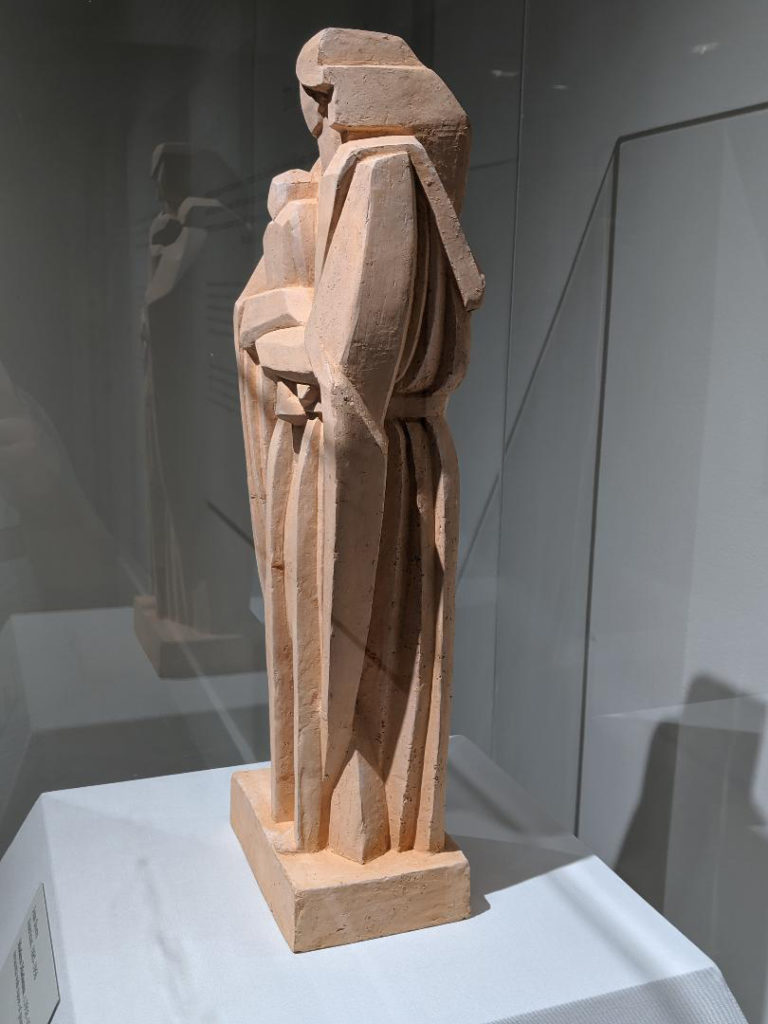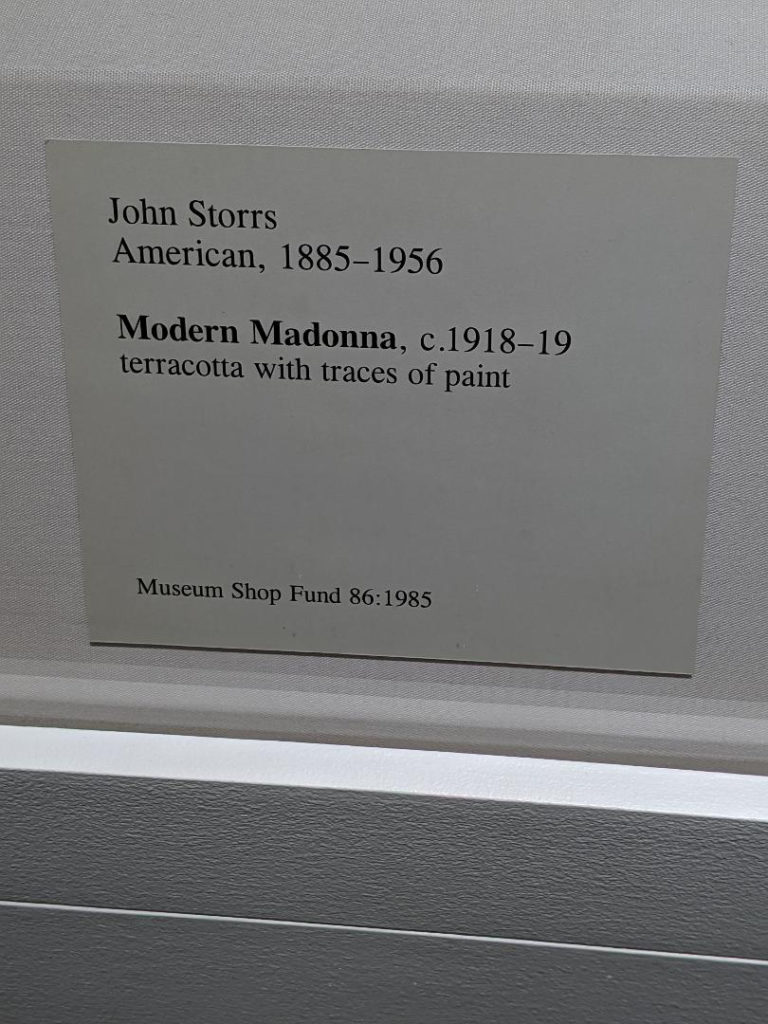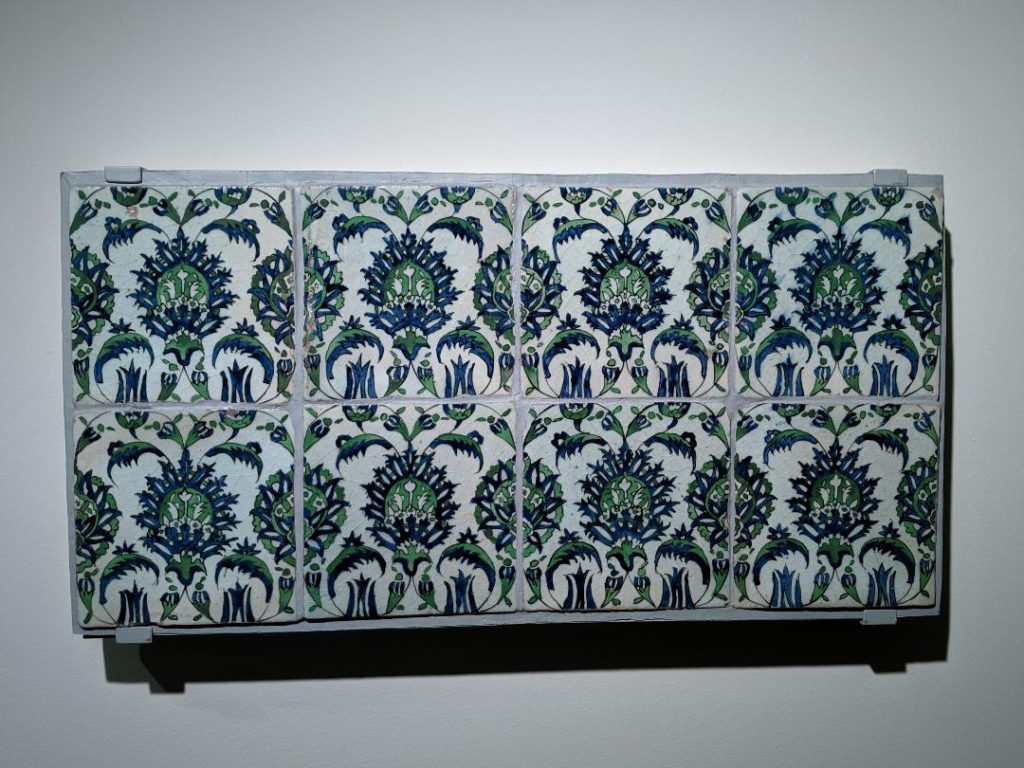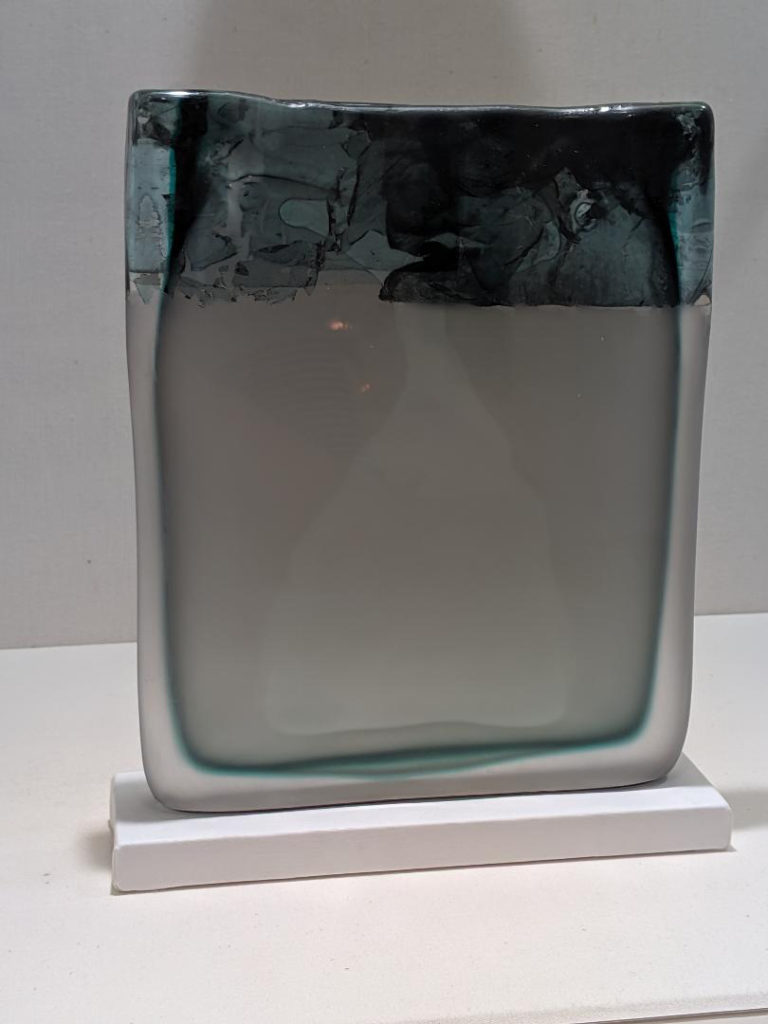Photographs don’t do this mosaic justice. It is so much larger than you think it should be, so much more intricate than it seems, and it makes you just stop and stare at it in wonder.
Wednesday
It seems odd to think that, even to the Romans, the Greeks and Egyptians were ancient and revered civilizations, worthy of being emulated in artistic stylizations. History is nothing more than a never-ending domino effect of tumbling empires, held together by the glue of art.
In this case, we have a beautifully wrought statue of a Greek goddess in marble, the flowing lines begging for the invitation of touch and reverence, of worship and devotion, of invocation and blessing, the divine and sacred brought to life on earth for those who were lucky enough to see it. The level of craftsmanship it took to produce sculptures of this type was unparalleled; the Roman Empire in the 2nd century AD laid claim to a host of the best craftsmen in the world. I can only begin to imagine what kind of a life those men would have lived.
Tuesday
The cult of death has evolved in many ways over thousands of years, but we still memorialize our deceased in the same ways we always have: in physical recreations of their deceased bodies. In this case, it is a memorial tomb marker with a lovely portrait. She is long gone, but we know what she looked like (or an approximation thereof), and that is enough to capture our imaginations.
Monday
Sunday
Saturday
There are many artists that I have a complicated relationship with. Otto Dix is one of those artists. I’m not wild about the majority of his work, or his styles in general – the shock/horror genre mixed with surrealism doesn’t fly for me. However, for whatever reason, I find myself drawn to this particular work. Be it the juxtaposition of color, light, and dimensional tonality, be it the composition on interrupted diagonals, be it the fragmented fractal focus, it speaks to me on a primal level for some reason. I’ll listen for long enough to shut it up, then I walk away from it and find something else to look at.
Friday
Fun fact: my favorite color when I was a child was yellow. Secondary fun fact: when I was a child, I wanted to learn how to blow glass, until I learned just how hot glass was (and considering I couldn’t get a casserole dish out of the oven without burning myself, introducing wee me to the fiery depths of a hellish glass furnace would not have gone well).
Glassware is one of my favorite forms of artwork; in this case, the stark harsh lines are broken up by softer, flowing edges and gentler waves, giving the illusion of motion within the larger framework. The light dances between the angles and planes, refracting and reflecting, creating a gentle dance that is both masculine and feminine, which definitely designates the design as American and probably closer to 1858-1860, as earlier periods were slightly more ornate and bending more toward the effeminate, as toward the European styles.
Thursday
This is one of those pieces that I find challenging in that I have such a love-hate relationship with it as to be almost laughable. Intellectually, it trots out the ‘noble savage’ trope and throws it in your face in such a way that it smacks of historical revision, whilst at the same time being such an object of beauty and style that it makes your heart ache with longing to reach out and touch the texture of the sculpture and purr when you feel the tiny imperfections in the lines.
I love to hate it and hate to love it.
This is why art exists: to challenge us, to challenge the world around us. To make us hurt and feel things that we don’t want to feel.
Wednesday
Down on the first floor, hiding at the bottom of a stairwell, rarely noticed for the last 30 years or so has been this beautiful set of tilework. I say unnoticed because how many people actually look at what’s at the bottom of the stairwells? I do. I look everywhere at everything. I look in every nook and corner, around every doorway, up every staircase.
I’m in awe that these tiles have survived in this condition for this long; the colors are just as vivid now as the day they were fired. The scrollwork is just as ornate as the day it was painted. I love everything about them. They are one of my favorite hidden gems in the SLAM museum collection.
Tuesday
This might just look like a big hunking chunk of glass, but if you look a little closer, you can see layer upon layer upon layer of copper and glass inside the greater structure. These layers are fused together to create an intimately abstract sculpture that is more than the component parts of the piece, and certainly more than just a piece of glass.

